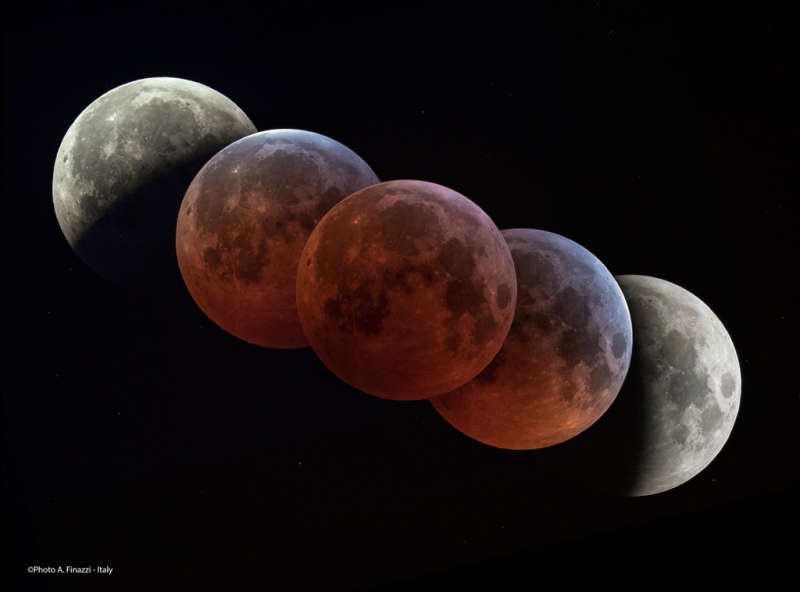Credit & Copyright: Antonio
Finazzi
Explanation:
The dark, inner shadow of planet Earth
is called the umbra.
Shaped like a cone extending into space, it has a
circular cross section most easily seen during a
lunar
eclipse.
For example, on January 21 the Full Moon
slid across the northern half of Earth's umbral shadow,
entertaining
moonwatchers around much of the planet.
In the total phase of the eclipse, the Moon was completely within
the umbra for 63 minutes.
Recorded under clear, dark skies from the
hills near Chiuduno, Italy this composite
eclipse image uses successive
pictures from totality (center) and partial phases
to trace out a large part of the
umbra's curved edge.
Reflecting sunlight scattered by the atmosphere into Earth's shadow,
the lunar surface appears reddened during totality.
But close to the umbra's edge, the limb of the eclipsed Moon shows a
distinct blue hue.
The blue eclipsed
moonlight originates as rays of sunlight
pass through layers high in the upper stratosphere,
colored by ozone that scatters red light and transmits blue.
1999 2000 2001 2002 2003 2004 2005 2006 2007 2008 2009 2010 2011 2012 2013 2014 2015 2016 2017 2018 2019 2020 2021 2022 2023 2024 2025 |
Январь Февраль Март Апрель Май Июнь Июль Август Сентябрь Октябрь Ноябрь Декабрь |
NASA Web Site Statements, Warnings, and Disclaimers
NASA Official: Jay Norris. Specific rights apply.
A service of: LHEA at NASA / GSFC
& Michigan Tech. U.
|
Публикации с ключевыми словами:
lunar eclipse - лунное затмение
Публикации со словами: lunar eclipse - лунное затмение | |
См. также:
Все публикации на ту же тему >> | |
